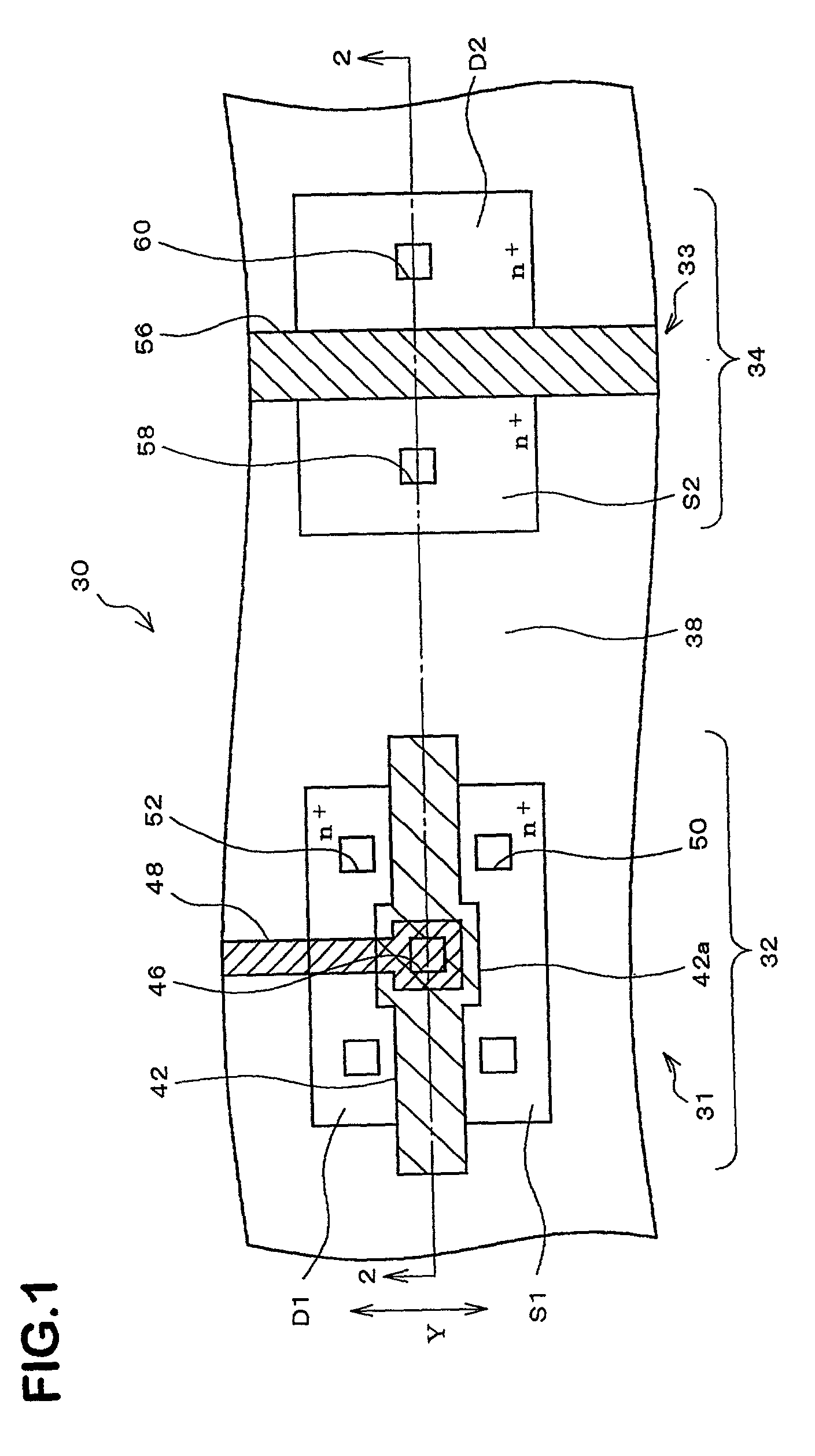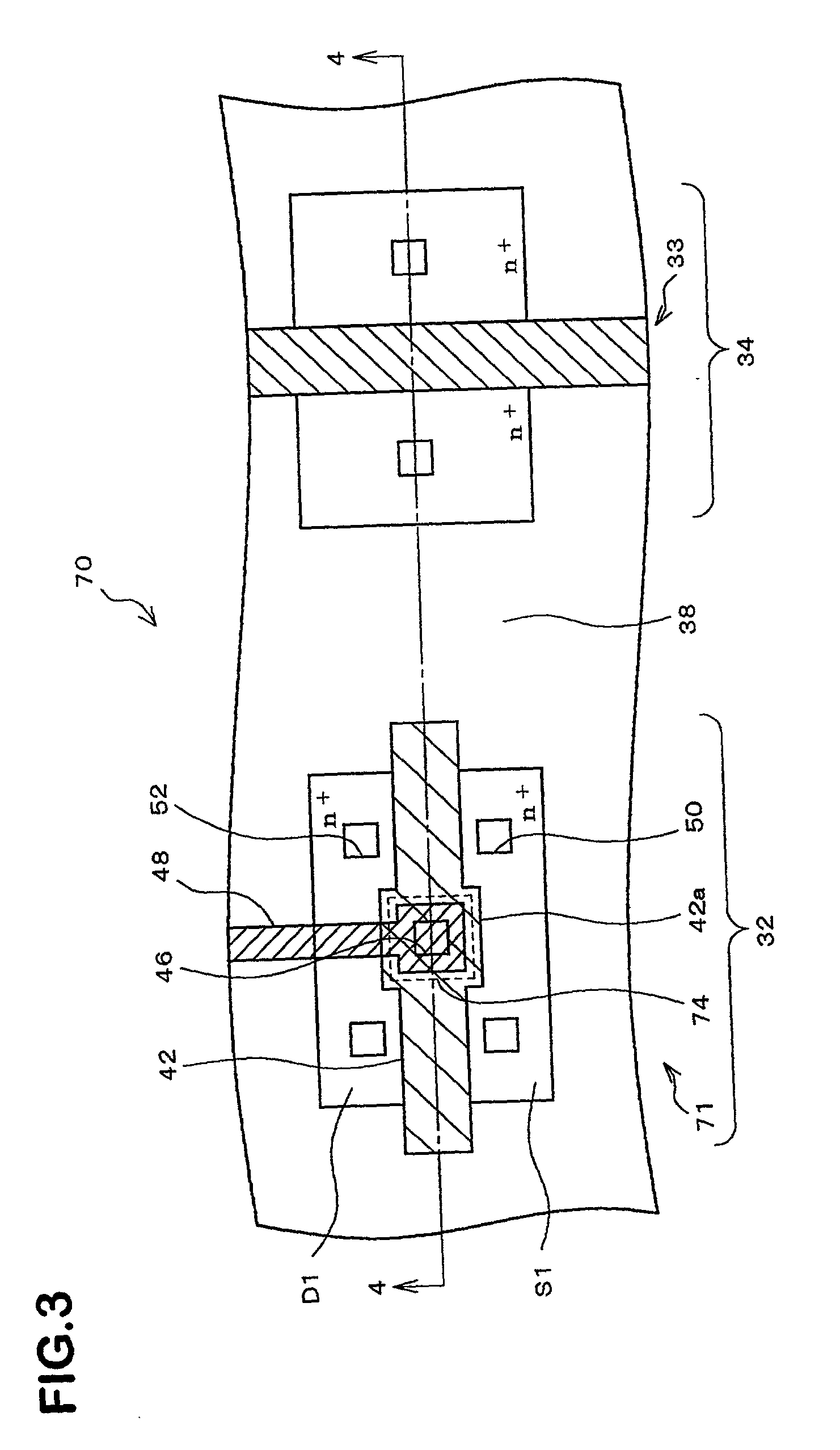Semiconductor device and wiring method thereof
a technology of semiconductor devices and semiconductors, applied in the field of semiconductor devices, can solve the problems of high risk of conventional semiconductor devices, inability to obtain the desired withstand voltage,
- Summary
- Abstract
- Description
- Claims
- Application Information
AI Technical Summary
Benefits of technology
Problems solved by technology
Method used
Image
Examples
Embodiment Construction
[0038] FIG. 1 conceptually illustrates a flat structure of a semiconductor device 30 which is a semiconductor device according to an embodiment of the present invention and which comprises a transistor 31 (semiconductor component). FIG. 2 is a cross-sectional view taken along line 2-2 of FIG. 1.
[0039] As shown in FIG. 1, the semiconductor device 30 comprises the transistor 31 and a transistor 33. The transistor 31 is an N channel MOS type field effect transistor which controls the current flowing between source S1 and drain D1 according to the voltage applied to a gate electrode 42 which will be described later. The transistor 33 is also a MOS type field effect transistor. In this embodiment, both transistors are low withstand voltage transistors.
[0040] As shown in FIG. 2, the transistor 31 is formed in a component forming region 32, and the transistor 33 is formed in another component forming region 34. The component forming region 32 and the component forming region 34 are separat...
PUM
 Login to View More
Login to View More Abstract
Description
Claims
Application Information
 Login to View More
Login to View More - R&D
- Intellectual Property
- Life Sciences
- Materials
- Tech Scout
- Unparalleled Data Quality
- Higher Quality Content
- 60% Fewer Hallucinations
Browse by: Latest US Patents, China's latest patents, Technical Efficacy Thesaurus, Application Domain, Technology Topic, Popular Technical Reports.
© 2025 PatSnap. All rights reserved.Legal|Privacy policy|Modern Slavery Act Transparency Statement|Sitemap|About US| Contact US: help@patsnap.com



